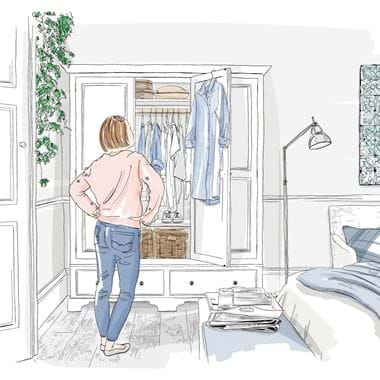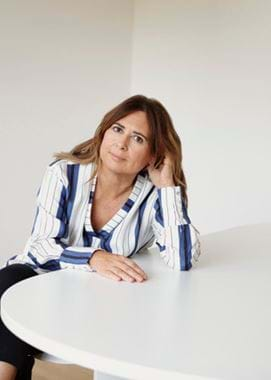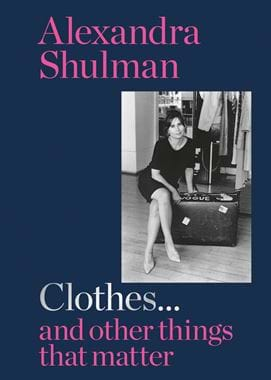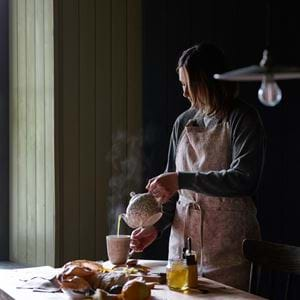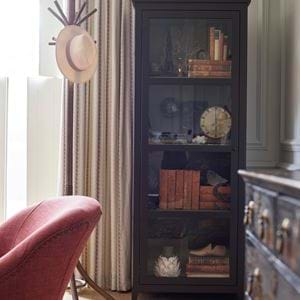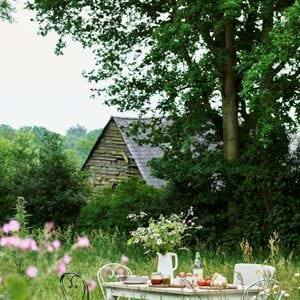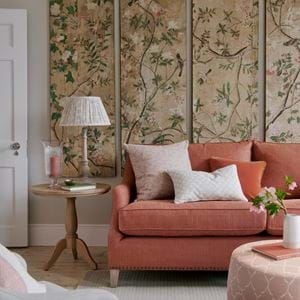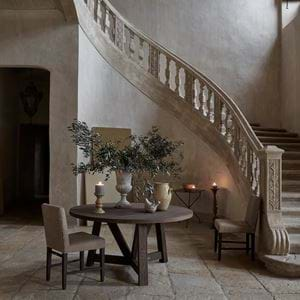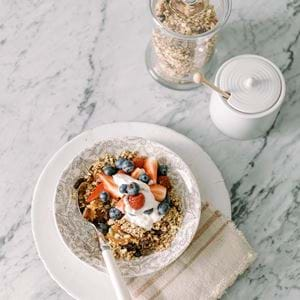Alexandra Shulman on fashion at home
Alexandra Shulman on fashion at home
As she examines how our style choices evolve with time, former editor of British Vogue, Alexandra Shulman, reveals just how closely fashion and interiors influence and echo each other, and what the way we choose to decorate and dress reveals about us – and the world around us.
Something from Stories
With our stores closed for the time being and delivery services working extra hard, we knew that not everyone would be able to get hold of the spring edition of our lifestyle anthology, Stories. So, rather than printing it, we’re publishing all the articles here on our journal instead, including this one. That way you can still read it, wherever you are in the world.
The way we decorate our homes says as much about us as the clothes we wear. They both tap into who we are and the times we live in. Last winter, I was staying in a beautiful bedroom in the recently renovated Fife Arms hotel in Balmoral. The room was a love story to Victoriana; brass detailing, Pugin-style mouldings, William Morris-inspired textiles, carpets and rugs. It was everything that contemporary style had not been for years. A million miles from the focus on Scandinavian simplicity, Northern-light colours and clean lines that so many of us have adopted. As I unpacked my suitcase, I saw I had two flounced-hem, long-sleeved midi dresses, a wool skirt in Morris style patterns and a lace blouse. I hadn’t realised it, but both interior style and my own wardrobe were changing in tandem.
When I bought my own house in 2006, it was covered in patterned wallpapers. The doors were stained dark brown. There was wall-to-wall carpet in most of the rooms. I ripped it all out and painted practically every wall and bare floorboard white. Now though, there are aspects of what was originally there that I appreciate in a way I didn’t then. I rather crave some carpet and the small spaces that existed before I made so much open-plan. Because we are living in times that encourage us to nest. Because even before Covid-19, we were, to an extent, hunkering down. In the UK, the last few years of the Brexit debate has made all of us think about what home means to us.
This means glowing filament light bulbs and sheepskin throws. The comforting enamel of the Butler’s sink as opposed to harsher stainless steel. The small luxury of footstools and headboards. In fashion, the direction of travel is similar. There’s a renaissance in gentle colour and texture, and currently, an almost total rejection of the minimalist black that was dominant for decades. Techniques like weaving, macramé and crochet are part of the summer trends, also patchwork and embroidery. Wafting white dresses that mirror the notion of fine, light curtains rippling in the breeze were on all the catwalks, simple but with a life-enhancing presence.
Few of us slavishly follow trends either in our clothes or in our homes, and individual style is about what we choose to incorporate. Yet it’s true that neither most people’s homes nor their wardrobes look as they did ten years ago, let alone further back. Obviously, it’s both easier and less expensive to buy a few new items of clothing to update your style than it is to give your home a revamp, but we move things along all the time, often really without being aware of it.
Corner sofas and big-screen plasma TVs, kitchen islands and their rows of pendant lamps were rarely found in our homes at the start of this century. Elaborate wallpapers and dusty, dark-coloured paints were hardly in evidence outside stately homes until even more recently. But now, they’re finding their way into our bathrooms and hallways.
Similarly, the high necks and frills of the many prairie-style dresses that we can find in our shops, the popularity of longer hemlines, the large puffed sleeves to be seen everywhere from the Oscars’ red carpet to our mass fashion brands, mirror the nostalgic comfort seeking that’s permeating design in homes and clothes.
When we choose what we wear, we’re telling the world something about ourselves, even if that is that we don’t care much about what we are wearing. When we choose a cushion, a light, a tablecloth, the shape of a sofa, we’re doing similarly. Yes, the choice is based on what we want and need (or think we need), but it’s also about what we want other people to see when they arrive in our homes.
The culture of the times dictates design, whether that be the fad for plastics and op-art inspired monochrome of the sixties, the eastern influence of hippie clothes and decorating fabrics of the seventies, or the high-bling ostentation of the early noughties. My own desire for a set of rush matting dining chairs and a lush hydrangea-print shirt dress play into what many of us are currently looking for in our purchases – sustainability, a connection to the natural world, and soft and nurturing textiles. They may be central to our aesthetics of the moment, but I intend them to remain part of my possessions for many years to come.
Read more...
Clothes... and Other Things That Matter by Alexandra Shulman is published by Octopus Publishing Group and available to purchase here for £16.99.

